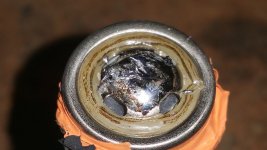Addy
100 W
EbikeAus said:I have used the axial glass fuses, they are generally low amp but they do contain the burnt fuse material and you can see when fuses are blown...if you use clear heat shrink as I do.
Are you referring to the kind of fuses that I tested here https://endless-sphere.com/forums/viewtopic.php?f=1&t=93472&p=1367786?
I would avoid using those firestarters and stick with fusible wire.



